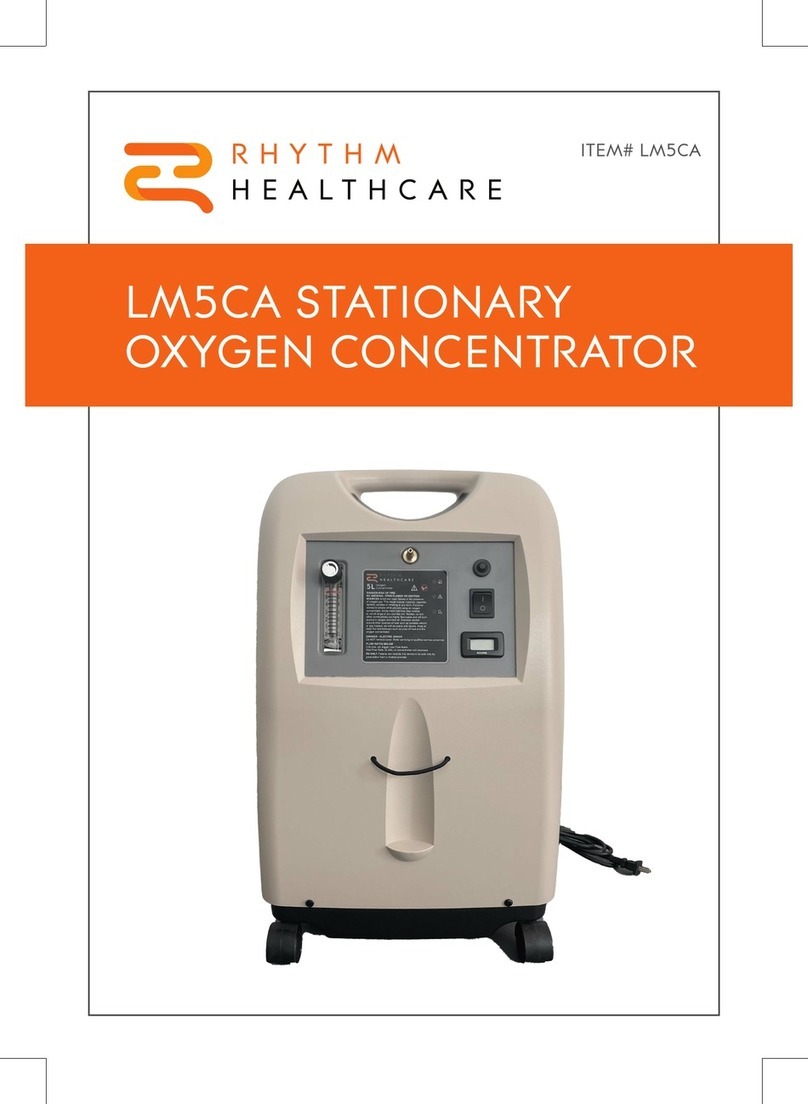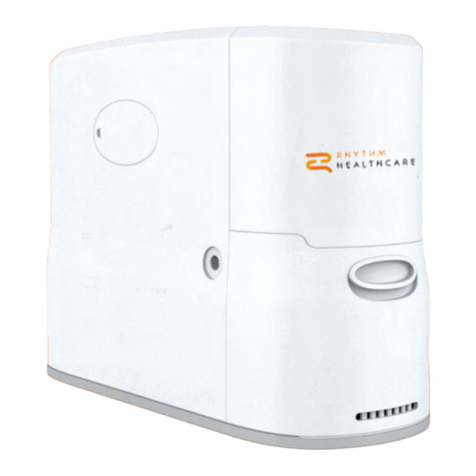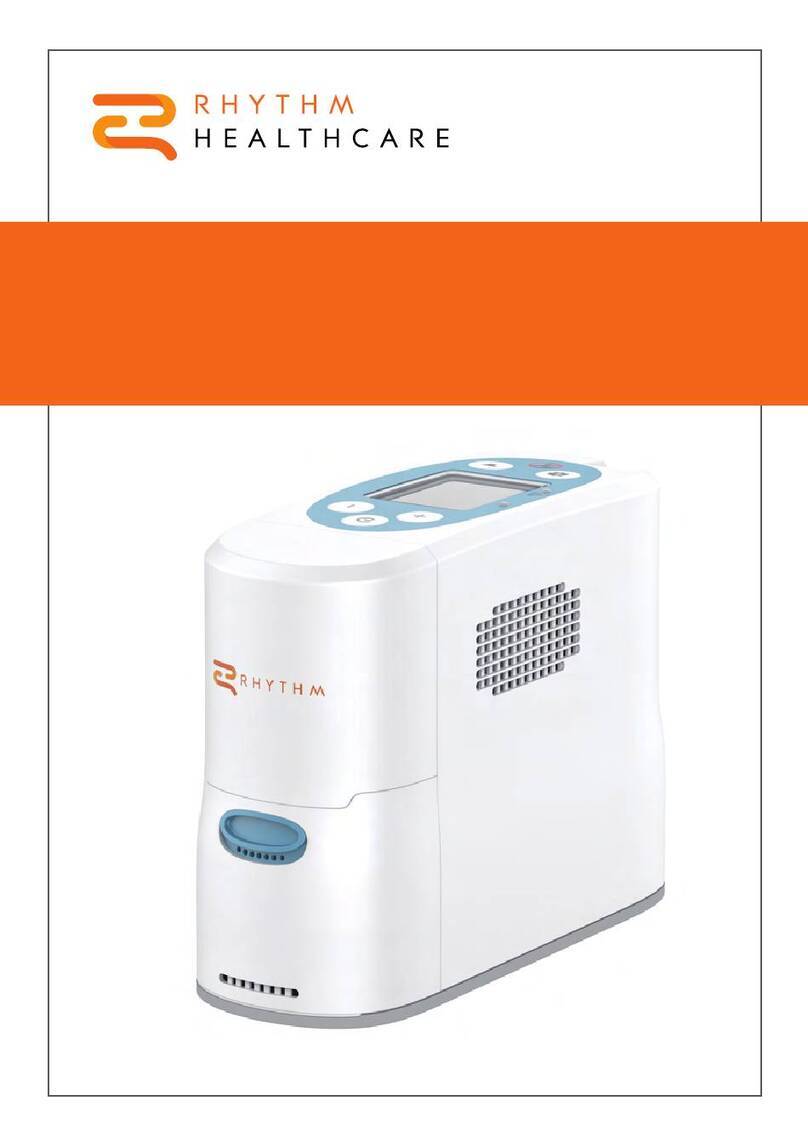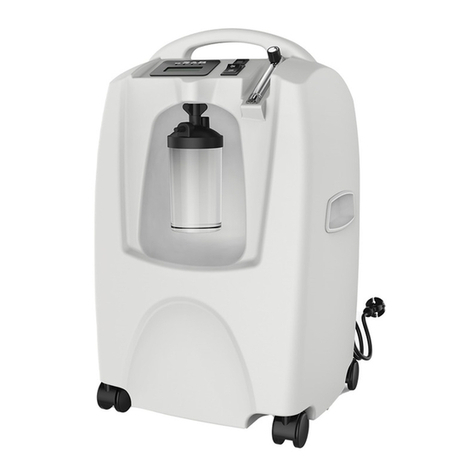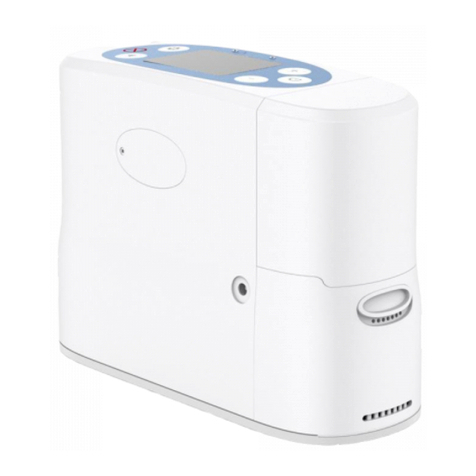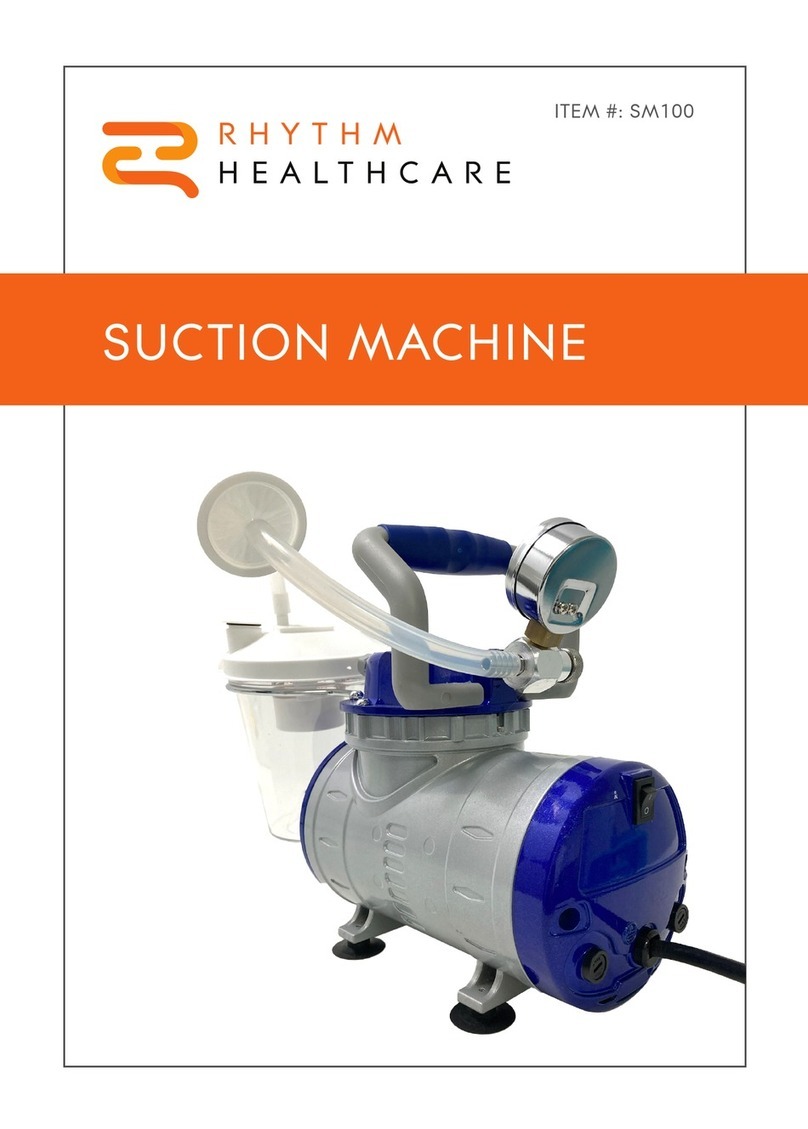
5
IMPORTANT SAFEGUARDS
Please read and understand this manual before operating your unit. Important
safeguards are indicated throughout this guide.
Pay special attention to all safety information. If you have any questions, contact
your provider.
WARNING: No modification of this equipment is permitted.
WARNING: For your safety, the oxygen concentrator must be used according to the prescription
determined by your provider. If you feel any discomfort or are experiencing a medical emergency while
undergoing oxygen therapy, seek medical assistance immediately to avoid harm.
WARNING: The device is not intended for life support. If the provider has determined that an interruption in the
supply of oxygen, for any reason, may have serious consequences to the user, an alternate source of oxygen
should be available for immediate use.
WARNING: It is the responsibility of the provider supplying the LM5BA to the patient to ensure that the device
is used in a safe and effective manner in keeping with the provider’s prescription for supplemental oxygen
use. While this manual is intended to support this goal, ultimate determination of the
patient’s safety resides with the patient’s provider.
WARNING: Availability of an alternate source of oxygen is required in case of power outage or mechanical
failure. Back-up oxygen should be available (oxygen cylinders, etc.).
WARNING: Do not use your oxygen concentrator in the presence of flammable gases. This can result in rapid
burning causing property damage, bodily injuries, or death. Do not use oil, grease, petroleum-based products
or other flammable products with the oxygen-carrying accessories or the Oxygen Concentrator. Only water
based, oxygen compatible lotions or salves should be used. Oxygen accelerates the combustion of
flammable substances.
WARNING: Only use a mild detergent applied with a damp (not wet) cloth or sponge to clean the cabinet,
control panel, and power cord and then wipe all surfaces dry. Do not allow any liquid to get inside the device.
Pay special attention to the oxygen outlet for the cannula connection to make sure it remains free of dust,
dirt, and particles.
WARNING: Do not operate unit in a restricted or confined space ( i.e., a small case or handbag) where
ventilation can be limited. This can cause the oxygen concentrator to overheat and impair performance.
WARNING: The oxygen concentrator should be located in an area away from smoke, pollutants or fumes
